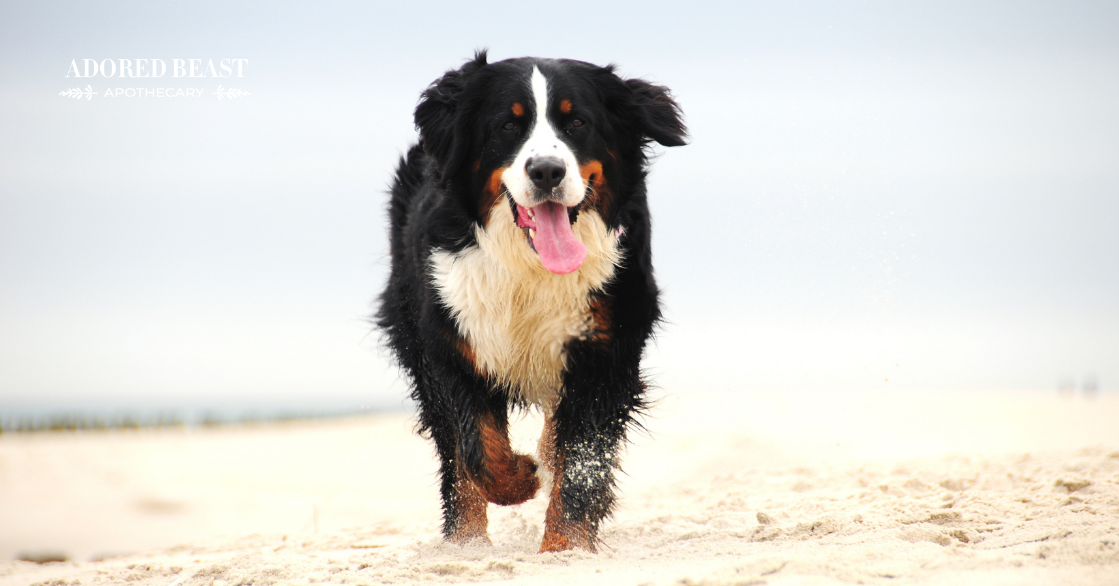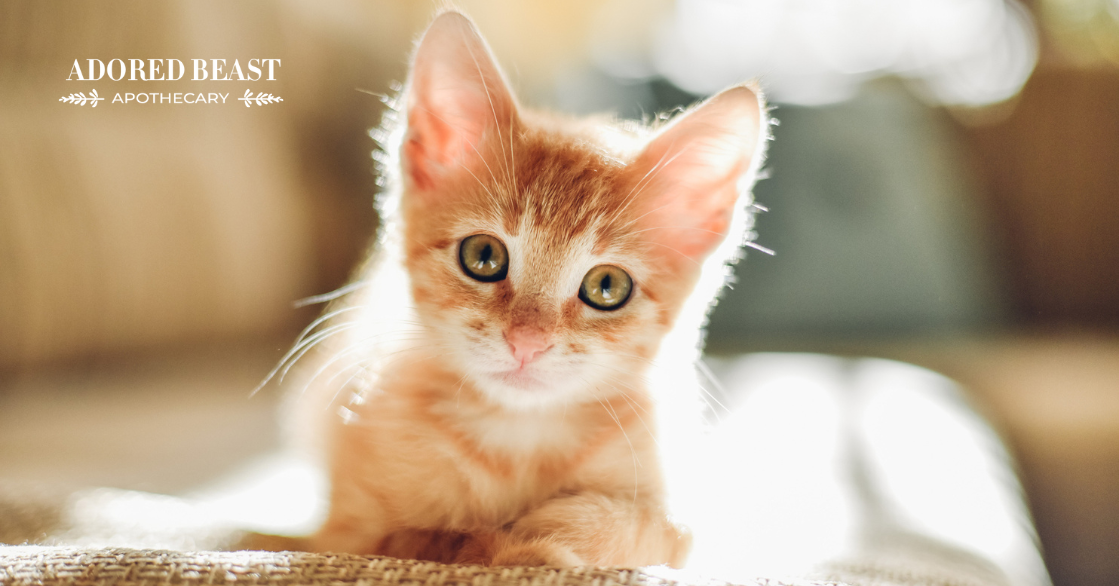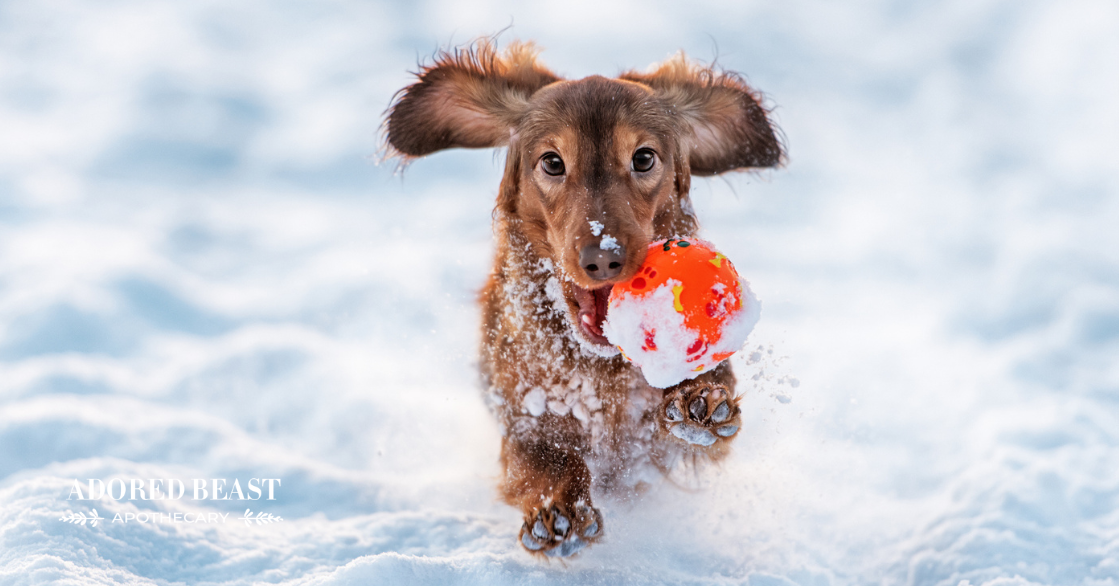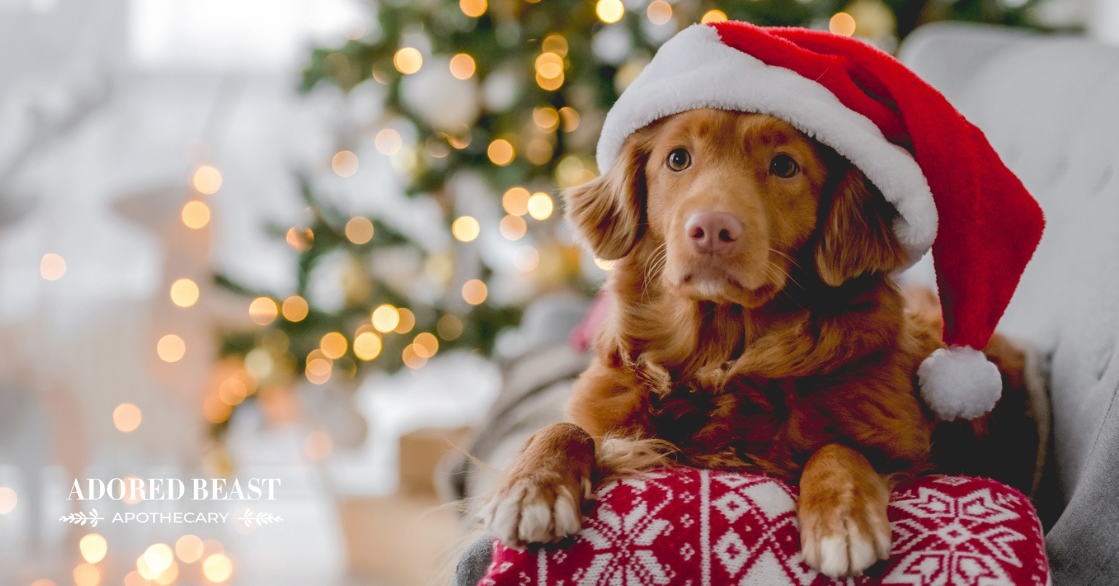Did you know that the most common knee injury for dogs is a rupture or tear of the cranial cruciate ligament (CCL tear in dogs).
So, what exactly is a CCL tear in dogs, and what approach can you take with a full or partial tear?
What is a Cruciate Ligament Injury in Dogs?
We often hear the term ACL tear or rupture in reference to dogs, but that’s actually incorrect. Humans get ACL injuries – tears or ruptures of the anterior cruciate ligament. Our dogs, instead, get cranial and caudal cruciate ligament injuries (CCL tears or ruptures).
Our dogs’ knees have a similar anatomical structure to the human knee. The cruciate ligaments are two bands of fibrous tissue located within each knee joint. They join the femur and tibia (the bones above and below the knee joint) together so that the knee works as a stable, hinged joint.
One ligament runs from the inside to the outside of the knee joint and the other from the outside to the inside, crossing over each other in the middle. (Fun Fact: cruciate means ‘to cross over’). In dogs and cats, these ligaments are called the cranial and caudal cruciate ligaments.
CCL injuries can be acute in nature, meaning they’re caused by a traumatic event. So it usually happens as a result of a traumatic event, such as a trip or fall. This can either create a full tear immediately or cause a small tear to one of the strands, which leads to more movement in the knee. The increased movement places stress on the knee, leading to pain and inflammation. This can result in weakness of the knee, and a loss of optimal function, leading to more inflammation and pain… This cycle can keep going until a complete tear occurs.
In my opinion, though, far more are autoimmune-related, not resulting from an event.
Let me explain…
A True “Injury”?
When I first opened my holistic veterinary clinic many years ago, I didn’t see cruciate tears in dogs very often. There would be some overweight dogs, big old dogs, who would come in with cruciate injuries. Like I’m talking carrying 50 extra pounds. But that changed. Soon I was seeing it ih all kinds of dogs – skinny dogs, fit dogs, large dogs, small dogs…
Fast forward a few years and I did a Canine Rehab Program. There were many different animal professionals there, and by the end of the program everybody was on the same page: when you go in and you look at these ligament injuries, rarely do you see a true rupture from the perspective of some dog running a million miles an hour and falling off a bank and truly tearing their cruciate.
Instead, often we don’t even notice an acute injury. We’re at the beach, and all of a sudden our dog comes hobbling back, toe-touching (or not even), and crying in pain. With a lot of those, when you open up the knee, the ligament is actually frayed, so you know that it has been breaking down for quite some time, and then it just snaps. In that situation, the majority of those are autoimmune-related.
Immune-mediated diseases can weaken the joint structure, increasing the risk of CCL rupture. For example, some dogs with immune-mediated diseases may have weakened ligaments or increased collagenase activity, which can contribute to CCL degeneration and rupture.
Initial Support for a CCL Injury
First things first: You can’t just leave a CCL tear alone and hope it will heal on its own. Whether you choose to do surgery or not, you can’t just let your dog conntinue to run on it, or just give short periods or rest. If it’s a full tear, it won’t repair itself. Even if it’s a partial tear, you need to be very careful and approach it properly.
As soon as a CCL tear happens, give your dog Arnica 1M and Aconite 1M, one time, every hour, 3 times. You can use 200C if you can’t get 1M.
When you go to the vet, ask for a 72 hour conservative approach with homeopathic remedies. This is where I would introduce a combination of remedies:
- Arnica 1M
- Ruta 1M
- Symphytum 200C
- Calendula 200C
Typically in acute cases you would go very high potencies.
Tip: These are all found in Jump 4 JOYnts.
During this 72 hour period, give the formula 4 times a day. Try to give it every four hours. At night, give it right before bed, then give it again first thing in the morning. If your dog is waking up and whimpering, you can keep to the every four hours.
If your animal weight bears (even if she is just toe-touching) continue giving it until you recheck with your veterinarian. So, let’s say your recheck isn’t for 5 days or 6 days, keep giving it 3-4 times a day until you can get back in.
At my clinic, I created Jump for JOYnts specifically for a CCL tear in dogs. That’s why I initially developed it. Quite quickly we were seeing how much it was helping animals with their arthritis. That’s why we recommend it for arthritis, or really any kind of musculoskeletal injury.
CCL Tear in Dogs: First Steps
If your animal has a cruciate injury, start with these questions:
1. Is it a full rupture or a partial tear?
Don’t automatically assume it’s a full rupture. You need to find out for sure, because partial CCL tears in dogs can actually heal quite well with the right support. I would say that many, many are partial tears but they look like full ruptures.
Your vet will do something called a drawer to see whether, when you pull the drawer open, it moves open or stays. And even with pretty obvious drawers, they can still be partial tears.
2. What is your animal’s age?
Is your dog in an age bracket or in good enough health to have surgery? Depending on your pet’s age or health status, surgery may not be recommended or ideal.
3. What is your animal’s physical health and size?
Is she a really big dog who is overweight? Or does she have Cushing’s disease or thyroid disease or any number of other health conditions like arthritis? This may also impact whether or not you do surgery.
You really need to stand back and get all of your questions answered to be able to create a full picture.
If You Opt Out of Surgery for a CCL Tear in Dogs
You may choose, for different reasons, not to do surgery.
Perhaps your animal is geriatric or compromised, and you don’t want to to put them through the risk of surgery. Maybe your animal is young, and toe-touching, and you would prefer to avoid surgery. Or, maybe you just can’t afford the surgery. Know that there are things you can do for all of these situations.
- Look for a company that specializes in and is well known for making braces for animals. In my experience, a company that uses a mold to cast and custom make the brace is best.
- Continue with the homeopathic remedies mentioned above, just reduce them to twice a day.
- Laser therapy and red light therapy are really good for reducing inflammation.
- Rehab swimming is phenomenal – there’s no weight on them, but they’re able to build their muscle mass.
- Physiotherapy, chiropractics, osteopathy, and massage are also very valuable for healing.
With a solid rehab and support regimen, chances are your dog will do amazing without the need for surgery.
At my clinic, I have to say we had so much success without surgery.
If You Choose to Have the Surgery Done
Sometimes, surgery is unavoidable.
If you choose to do the surgery, my number one thing is to make sure that it is an orthopaedic surgeon who does it. I can’t stress this enough!!
I know that there are some amazing vets out there, and some do have a knack for these types of surgeries. But I do believe it’s best when done by a board certified orthopaedic surgeon. You really have to look at how often they’re doing these surgeries. When it comes to cruciate tears, you want someone who is working with bone and doing these surgeries all day long.
Do a ton of research on all the different types of surgeries. There are lots of different types. When you have a consult with the surgeon, make sure you’re asking them every single question you can think of with regard to each one:
- how long will your dog be off her feet?
- what are the side effects?
- what are the pros and what are the cons?
Really make a list of the answers. Don’t let them bully you into a type of surgery if you’re not 100% sure about it. Make your own decision based on what feels right to you.
Ask around and find someone whose animal has already had great success and get an appointment with that surgeon for a consult. Nothing is better than word of mouth. You want someone to say “my dog has never looked back. She had this surgery and she just did amazing, flying colours,” not “yes my dog had it too but we had to take him back in. I’m not even sure we should have done it because sometimes he limps just as bad.” Take those opinions to heart and consider them when you’re making your decision.
Even if you choose surgery, continue with the homeopathic remedies and add in some of the rehab therapies (if not all of them). This will help prevent the injury from happening to the other leg.
The Importance of Post-Surgery Support
Now, this is a scary percentage, but they say that more than 50% of dogs will blow their other leg if they’ve already had the other one go. And that to me just screams “autoimmune.” The second leg is already compromised, the inflammatory response is already there. Then there’s all the extra weight bearing until the other leg heals. It’s tough.
That said, in our clinic, I would say 80-90% of those dogs who did come to us to receive post-surgery support DID NOT blow the other leg! So, it’s really, really, paramount that you support the other leg!
- Offer this support by following through with all post-operative therapy recommendations. Take it easy as the repaired leg heals, and don’t let your dog overdo it while healing. If you go home with a guide for post-surgery care, follow it to the letter. Just because you “think” a leg is healed, doesn’t mean it is.
- Do therapy on the non-injured leg. This may be massage, red light therapy, laser therapy, water therapy – any number of things to support the leg. Ask your surgeon what might be most useful.
- Give your dog supplements that support the joints, muscles, ligaments, and tendons, including omega-3s, pre and probiotics, and homeopathic remedies (like Jump for JOYnts).
A CCL tear in dogs can be very painful, and your dog needs you to help support them through the process, whether you choose surgery or not. With supportive home care, a custom brace, and some really good therapy, you can help them heal and get back to their happy-go-lucky self!












